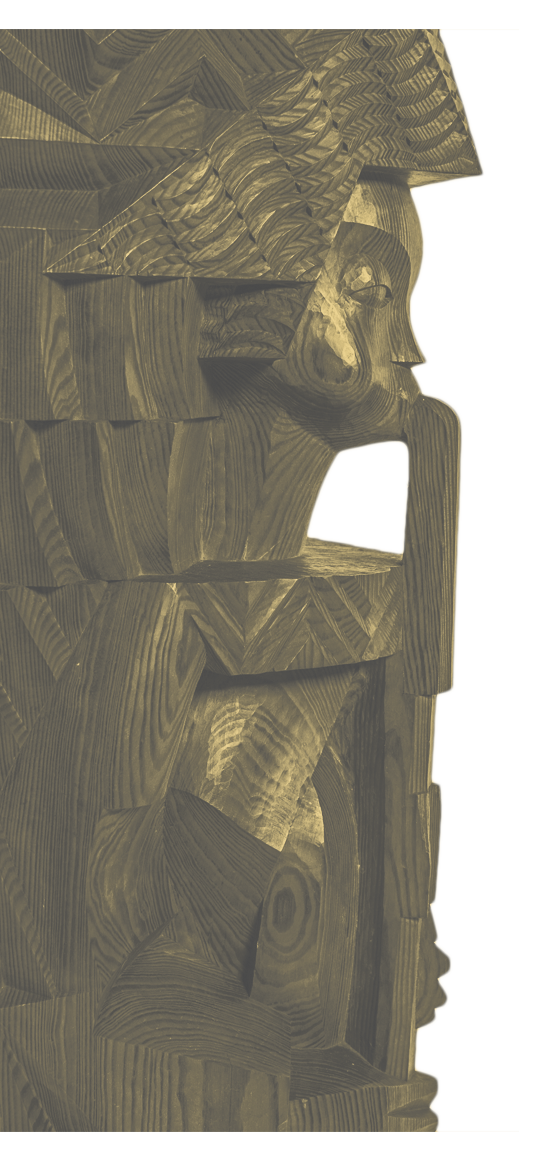
GRAND PRIX
Jan Szczepkowski had his breakthrough in 1925. At the International Exhibition of Decorative Arts and Modern Industry (l'Exposition internationale des Arts décoratifs et industriels modernes) which was organized on 28th of April in Paris, the artist got rewarded with a Grand Prix for the Chapel of Nativity and with a Diplome d’Honneur for his teaching system.
The tradition of organizing exhibitions in the contemporary way had it’s beginning in London in 1851. The Parisian Exhibition had been originally planned for 1915 but unfortunately got rescheduled due to the start of World War I. When it finally opened in 1925 it proved to be a great chance for an international debut of Poland: an opportunity to show the world freshly reborn nation’s independent thinking and creative force. Jerzy Warchałowski in May 1921, wrote about the importance of emphasizing Polish individuality and the need to find its well-deserved place among other independent nations through Polish art and technology.
Jerzy Warchałowski was appointed as General Polish Delegate to the Exhibition and his choice of artists shaped the style of Polish display, seeking the unique aesthetic of a newly reborn country. He succeeded in finding it. It was truly a new era for Polish art.
Yet the 1925 Exhibition has changed much more things. The Art Nouveau, that had ruled since XIX century, with its free composition, asymmetry and floral ornaments was forgotten. Instead, Art déco claimed the place of the main artistic style, represented by smooth yet sharp geometric shapes mainly in interior design. According to French sources of information, the Exhibition was visited by 16 million guests.
Budowa pawilonu polskiego. Przed budynkiem członkowie komitetu organizacyjnego, od lewej: doradca techniczny, architekt Tadeusz Stryjeński (ówczesny teść Zofii Stryjeńskiej); komisarz generalny sekcji polskiej Jerzy Warchałowski, delegat Rządu Polskiego do spraw wystawy sztuki dekoracyjnej, rzeźbiarz Ludwik Puget; autor projektu pawilonu polskiego architekt Józef Czajkowski. 1925 R.
Komisarz generalny sekcji polskiej Jerzy Warchałowski przed wejściem budowanego pawilonu polskiego. 1925 R.
Otwarcie polskiego pawilonu podczas międzynarodowej wystawy. Widok zewnętrzny. 1925 R.
Such uniformity of Polish pavilion combined with the high quality of the presented artwork was awarded with many prizes. Because of that, there are some inaccuracies when it comes to their actual amount. According to Jerzy Warchałowski Polish exhibits won 189 prizes, among them: 36 Grand-Prix prizes, 31 honorary diplomas, 60 gold medals. What is more, Poland got the biggest amount of Grand-Prix prizes in interior design projects (6) and in the textile section, ex aequo with Austria (7). Mieczysław Tretera, on the other hand, counted 172 awards. He explained it by stating that there were actually 251 Polish exhibitors officially registered. He excluded 56 art schools’ professors from the count who did not receive any prizes. The third comment, comes from Anna M. Dexler and Andrzej K. Olszewski. They calculated the biggest amount of 205 awards, including: 35 Grand Prix prizes, 31 honorary diplomas, 70 gold medals, 56 silver medals and 13 brown medals.
Other notable contestants were the students of the Zakopane school. They were awarded for wooden statuettes, referring to the art of Podhale region.
Nevertheless, the greatest successes for Poles was the purchase of Szczepkowski's Chapel of Nativity by the French Government. He was awarded with the Grand Prix and Legion of Honour. It was the start of the busiest period in his career.
Grand Prix
Legia Honorowa
Warchałowski considered the Chapel to be perfectly in tune with folk doctrine, inspired by the style of Zakopane and folklore themes. At the same time, it remained modern, fresh.
As it was mentioned earlier, the Chapel was purchased by the French Government, though they paid the third of the prearranged prize (total of 25 000 francs). Szczepkowski wanted to display it in the Museum of Decorative Arts in Louvre or in one of the churches in Paris. Ultimately it was placed in a Polish Church in Dourges. The town is in the Pas-de-Calais region, about a hundred kilometers from Paris.
Information sources:
Chrudzimska – Uhera Katarzyna, JAN SZCZEPKOWSKI, ŻYCIE I TWÓRCZOŚĆ, Urząd Miejski w Milanówku, 2008 r.
https://wilno.tvp.pl/47787010/95-lat-temu-na-wystawie-w-paryzu-narodzilo-sie-polskie-art-deco
https://opolnocywparyzu.pl/miedzynarodowa-wystawa-sztuki-dekoracyjnej-i-wzornictwa-1925-w-paryzu/
Ekspozycja w pawilonie polskim. Kaplica autorstwa rzeźbiarza, prof. Jana Szczepkowskiego.
Ekspozycja w pawilonie polskim
Jan Szczepkowski na tle montażu kapliczki na wystawie paryskiej
Jan Szczepkowski w okresie wystawy paryskiej
Kapliczka Bożego Narodzenia
Kapliczka Bożego Narodzenia w Pawilonie Polskim, 1925 r.